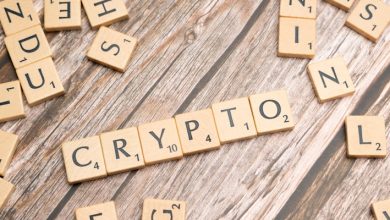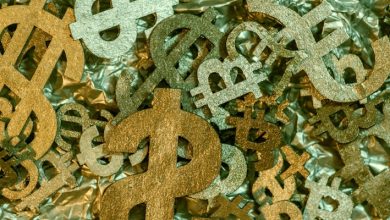An Introduction to NFTs: What Are They and How Do They Work?

- Understanding the Basics of NFTs
- Exploring the World of Non-Fungible Tokens
- The Rise of NFTs in the Digital Age
- Demystifying the Concept of NFTs
- A Beginner’s Guide to NFTs
- Unlocking the Potential of Non-Fungible Tokens
Understanding the Basics of NFTs
NFTs, or Non-Fungible Tokens, have gained significant popularity in recent years as a new form of digital asset. **Understanding** the basics of NFTs is crucial for anyone looking to explore this emerging market.
NFTs are unique digital tokens that represent ownership of a specific item or piece of content. Unlike cryptocurrencies such as Bitcoin or Ethereum, which are fungible and can be exchanged on a one-to-one basis, NFTs are one-of-a-kind and cannot be replicated. This uniqueness is what gives NFTs their **value** and appeal to collectors and investors alike.
One of the key features of NFTs is their ability to be bought, sold, and traded on various online marketplaces. These marketplaces use blockchain technology to verify the authenticity and ownership of each NFT, providing a secure and transparent way to conduct transactions. **Artists**, musicians, and other creators have embraced NFTs as a way to monetize their work and connect with fans in new and innovative ways.
When purchasing an NFT, buyers receive a digital certificate of ownership that is stored on the blockchain. This certificate includes information about the NFT, such as its **metadata**, provenance, and ownership history. This information is crucial for establishing the authenticity and **scarcity** of the NFT, which can impact its **value** on the market.
Overall, NFTs represent a unique opportunity for creators and collectors to participate in the digital economy in a new and exciting way. By **understanding** the basics of NFTs and how they work, individuals can make informed decisions about buying, selling, and **trading** these digital assets.
Exploring the World of Non-Fungible Tokens
Non-fungible tokens (NFTs) have taken the digital world by storm, offering a unique way to buy, sell, and trade digital assets. Unlike cryptocurrencies such as Bitcoin or Ethereum, which are interchangeable and have the same value, NFTs are one-of-a-kind and cannot be replicated. This makes them highly sought after by collectors and investors looking to own a piece of digital history.
NFTs are built on blockchain technology, which ensures that each token is unique and cannot be duplicated. This technology also provides a secure and transparent way to verify ownership of digital assets, making it easier for creators to monetize their work and for buyers to invest in digital collectibles.
Exploring the world of NFTs opens up a whole new realm of possibilities for artists, musicians, and other creators looking to showcase their work in a digital format. By tokenizing their creations, they can reach a global audience and connect with fans in a way that was not possible before. This has led to a surge in popularity for NFTs, with some pieces selling for millions of dollars at online auctions.
As the NFT market continues to grow, it is important for both creators and buyers to understand how these digital assets work and how to navigate the world of non-fungible tokens. By staying informed and educated about the latest trends and developments in the NFT space, individuals can make informed decisions about buying, selling, and trading digital assets. Whether you are an artist looking to showcase your work or an investor looking to diversify your portfolio, exploring the world of NFTs can open up a world of possibilities.
The Rise of NFTs in the Digital Age
NFTs have been gaining popularity in recent years, especially in the digital age where everything is becoming more virtual and online. Non-fungible tokens are unique digital assets that are stored on a blockchain, making them one-of-a-kind and not interchangeable like cryptocurrencies. This uniqueness has led to a rise in interest from collectors, artists, and investors looking to capitalize on the growing trend.
Demystifying the Concept of NFTs
NFTs, or Non-Fungible Tokens, have been gaining popularity in the digital world, but many people still find the concept confusing. Let’s demystify the concept of NFTs to help you understand what they are and how they work.
NFTs are unique digital assets that are stored on a blockchain, making them one-of-a-kind and not interchangeable with other tokens. Unlike cryptocurrencies like Bitcoin or Ethereum, which are fungible and can be exchanged on a one-to-one basis, NFTs are indivisible and cannot be replicated.
One of the key features of NFTs is their ability to represent ownership of digital or physical assets, such as art, music, videos, or even virtual real estate. By tokenizing these assets, creators can sell them as NFTs, allowing buyers to own a piece of the digital world in a secure and transparent way.
When you purchase an NFT, you receive a digital certificate of ownership that is recorded on the blockchain, providing proof of authenticity and ownership. This certificate includes metadata that details the asset’s origin, creator, and any associated rights or licenses.
NFTs have opened up new opportunities for creators to monetize their work and for collectors to invest in unique digital assets. As the NFT market continues to grow, it is essential to understand the basics of how NFTs work and the potential they hold for the future of digital ownership.
A Beginner’s Guide to NFTs
NFTs, or non-fungible tokens, have gained significant popularity in recent years as a new form of digital asset. For beginners looking to understand NFTs, it is essential to grasp the basic concept behind them. Unlike cryptocurrencies such as Bitcoin or Ethereum, which are fungible and can be exchanged on a one-to-one basis, NFTs are unique digital assets that represent ownership of a specific item or piece of content.
One of the key features of NFTs is their ability to be bought, sold, and traded on various online marketplaces. This allows creators to tokenize their work and sell it directly to collectors, bypassing traditional intermediaries. Additionally, NFTs are stored on a blockchain, a decentralized and secure digital ledger that ensures the authenticity and ownership of the token.
When purchasing an NFT, buyers receive a digital certificate of ownership that is recorded on the blockchain. This certificate includes information about the creator, the asset itself, and details about the transaction. This transparency and immutability provided by blockchain technology make NFTs a secure and reliable way to buy and sell digital assets.
Unlocking the Potential of Non-Fungible Tokens
Non-fungible tokens (NFTs) have gained significant attention in recent years for their ability to revolutionize the way digital assets are bought, sold, and traded. These unique tokens are built on blockchain technology, making them secure and tamper-proof. One of the key advantages of NFTs is their ability to represent ownership of digital assets, such as art, music, videos, and even virtual real estate.
NFTs have the potential to unlock new opportunities for creators and collectors alike. Artists can tokenize their work, allowing them to retain ownership and control over their creations. Collectors, on the other hand, can purchase and trade these digital assets with confidence, knowing that they are getting the authentic and original version.
By leveraging smart contracts, NFTs can also enable creators to earn royalties every time their work is sold or traded. This provides a sustainable source of income for artists and incentivizes them to continue producing high-quality content. Additionally, NFTs can be used to prove ownership of physical assets, such as luxury goods or real estate, further expanding their potential use cases.
Overall, NFTs have the power to democratize the art world, giving artists more control over their work and allowing collectors to invest in unique and valuable digital assets. As the technology continues to evolve, we can expect to see even more innovative use cases for NFTs in the future.



